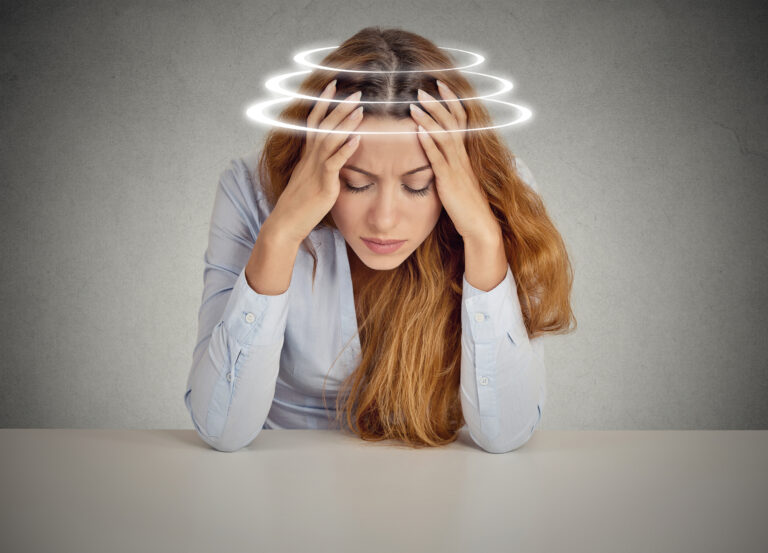Table Of Content

Motion or land sickness can be a frustrating and debilitating condition that can impact your daily life, especially after a cruise. While there is no guaranteed cure, there are several lifestyle changes and remedies that can help alleviate symptoms. One way that doctors diagnose motion sickness is by evaluating your internal models.

Devices for Motion Sickness Relief
If the symptoms are not chronic, there are several things you can do to cure it and get back to normal. Preventing MdDS entirely is challenging, as the triggers are unpredictable and unavoidable in certain situations. Common symptoms include pain in the ear, neck and back, accompanied by chronic fatigue. Extreme sensitivity to light and smell can also be present with persistent MdDS. In rare cases, there are reports of cognitive impairments, such as difficulty with memory and concentration.
What’s the treatment for mal de debarquement syndrome?
Her dizziness started after two days on a boat, and then it never went away - The Washington Post
Her dizziness started after two days on a boat, and then it never went away.
Posted: Sat, 30 Sep 2017 07:00:00 GMT [source]
Acupuncture involves the insertion of thin needles into specific points on the body, and it is believed to help promote balance and alleviate nausea and vomiting. One of the most popular natural remedies for motion sickness is ginger. Ginger has been used for centuries to treat nausea and vomiting, and studies have shown that it can be effective in reducing symptoms of motion sickness as well. You can try drinking ginger tea or taking ginger supplements to help alleviate your symptoms. In most individuals, the sensation of rocking, bobbing, swaying, etc. following a cruise or other passive motion experience is transient. Symptoms lasting up to two weeks is considered within the normal range.

What is mal de débarquement syndrome (MdDS)?
This therapy involves exercises that help you retrain your brain to process the signals it receives from your inner ear, which can help reduce your symptoms. By following these tips, you can manage motion sickness and enjoy your travels without feeling sick. Remember, everyone’s experience with motion sickness is different, so it’s important to find what works best for you. If you are experiencing any of these symptoms, it is important to take steps to manage your motion sickness. This may include taking medication, avoiding certain foods or activities, or using relaxation techniques to reduce anxiety.
What Causes Vertigo after Cruise Ship Vacation?
Anxiety and stress can also affect the autonomic nervous system, which controls essential functions like heart rate, blood pressure, and breathing. In some individuals, the heightened state of anxiety can cause changes in blood pressure, leading to dizziness. The release of stress hormones, such as cortisol, can further contribute to these symptoms. It is responsible for detecting motion, gravity, and head position, allowing us to navigate the world with a strong sense of equilibrium. Dehydration is another potential cause of dizziness after a cruise.
Factors such as age, prior history of motion sickness, and individual differences in sensory processing can influence the susceptibility to dizziness. Spending time on a cruise ship, particularly in warm climates, can lead to increased fluid loss through sweating. When your body doesn’t have enough fluids, it can cause your blood pressure to drop, leading to dizziness.
MdDS patients are usually diagnosed through the currently available diagnostic criteria 7, 4 and patient history. If these test results are normal, then MdDS can be diagnosed through exclusion 28. History and examinations from experienced physicians who are aware of MdDS symptoms is essential for making the right diagnosis. Personal or family history with migraine is a potential contributing factor and should be always enquired in patients presenting these symptoms 29. For individuals who experience dizziness after taking seasickness medication, it may be a result of the sedating effects of the medication.
Diagnosis of Mal de Debarquement is completely based on subjective criteria.
The symptoms of motion sickness can include dizziness, nausea, vomiting, and general discomfort. Once Mal de debarquement syndrome has begun, most motion sickness medications do not work. Low doses of certain anxiety medications--such as clonazepam--can help, as can certain types of antidepressants. The MDDS Foundation reports that some patients experience symptom improvement following physical therapy for the ear and daily exercise. The disorder is known as Mal de Debarquement Syndrome, also referred to as MdDS or MDD. It is a type of vertigo that occurs once you step out of a cruise ship.
However, the effectiveness of these approaches varies among affected individuals, highlighting the need for further research. However, in the majority of documented cases, the sensation persists for days or even months following the triggering event. Research indicates that the longer the symptoms persist, the lower the chances of the individual ever recovering. Near the end of the cruise I'll switch to dramamine and continue using dramamine for about a couple of days or so after getting off the ship.
MdDS occurs in both genders and in all age groups but current statistics demonstrate the highest reported incidence in females between the ages of 30–60. While MdDS most commonly presents after travel, for some onset appears to be spontaneous, without a motion event. An avid cross country skier noted that after she would come home from a day of skiing, she developed a sensation as if she was still skiing until she went to sleep. Many patients with MdDS or rocking symptoms say they have "motion memory" meaning that they feel as if they are moving after driving, or sometimes even just riding on an elevator. MdDS commonly occurs after boating or sea travel, though it can happen after air travel, extended land travel and even sleeping on water beds. In some cases, MdDS can occur after non-motion events (like surgery or childbirth), or for no known reason (spontaneous mal de débarquement syndrome).
As you can see from this information, the human balance system is very complicated. It relies on feedback from a number of sources, any of which can be damaged or disrupted due to injury, disease, or simply getting older. If your balance system is not working properly, you may have dizziness, vertigo, visual disturbances, nausea, concentration problems, and fatigue. Because this system is so complex, it makes diagnosing and caring for conditions of the balance system very difficult.
The persistent feeling of rocking and self-vertigo with MdDS can last for months or years after the event that triggered it. People who have the syndrome say they feel as if they are walking on a boat or rocking and swaying when they are sitting still. Mal de debarquement syndrome is a disorder that causes a person to feel like they’re moving when they’re not. Sometimes triggered by exposure to passive motion, like sea travel, it can be difficult to treat. By addressing anxiety and stress both during and after a cruise, you can better manage any feelings of dizziness and enjoy the experience to its fullest. Prioritizing self-care, relaxation, and seeking support when needed can go a long way in reducing the impact of anxiety and stress on post-cruise dizziness.
It can be difficult to navigate the feelings and emotions you may have, especially with prolonged symptoms. Talking with others who are going through the same thing can be beneficial for your mental and emotional well-being. Ask your healthcare provider for additional resources and whether there are new treatments that could work for you.
Spending time on a cruise ship, particularly in sunny and tropical destinations, can result in increased fluid loss through sweating. Activities like sunbathing, participating in water sports, or exploring ports of call can further contribute to fluid loss. When your body doesn’t have enough fluids, it can affect your blood pressure and lead to a drop in volume. Low blood pressure can reduce blood flow to the brain, resulting in dizziness. Another seasickness medication that is sometimes used is scopolamine, which is available as a patch applied behind the ear.

No comments:
Post a Comment